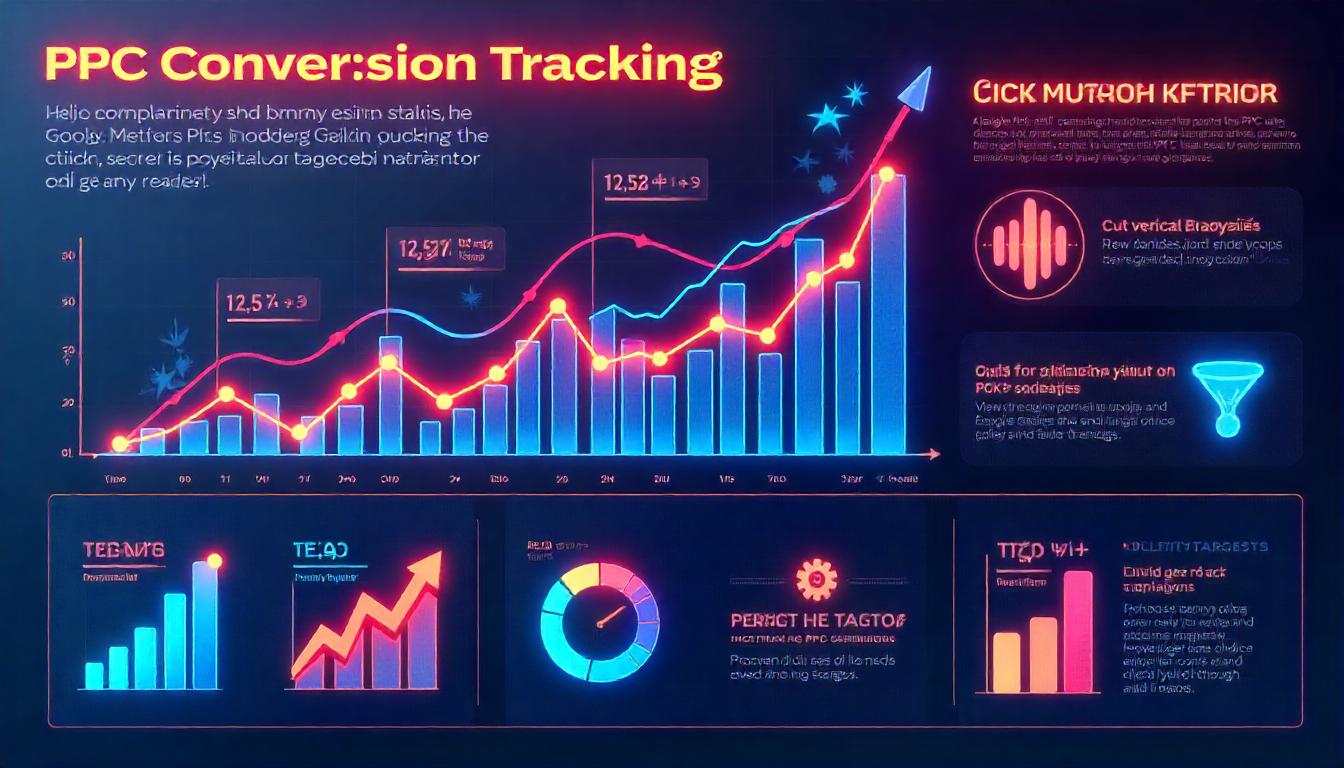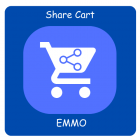Mastering PPC Conversion Tracking: Get the Insights You Need to Boost Results

Mastering PPC Conversion Tracking: Get the Insights You Need to Boost Results
Understanding PPC conversion tracking is crucial for improving your advertising outcomes. It allows you to measure how well your ads drive desired actions, such as sales, sign-ups, or downloads. By implementing effective tracking methods, you can optimize your campaigns for better performance and higher ROI.
Table Of Content
- Why Tracking PPC Conversions is Crucial for Your Success
- Mastering PPC Conversion Tracking for Success
- Optimize Bing Ads with Effective Conversion Tracking
- Exploring Other PPC Platforms for Conversion Tracking
- Essential PPC Conversions to Monitor
- Setting Up Conversion Tracking for PPC Success
- Measuring and Analyzing Conversion Data: A Direct Approach
- Understanding View-Through Conversion Tracking: A Key to Optimizing Your Display Ads
- Optimizing Bidding Strategies for Higher ROI
- Optimizing PPC Ad Copy for Higher Click-Through Rates
- Crafting Compelling Ad Copy: Key Tips for Boosting Click-Through Rates
Why Tracking PPC Conversions is Crucial for Your Success
Tracking your PPC conversions is essential for understanding how effective your campaigns are. By keeping an eye on conversions, you can pinpoint which ads drive the most valuable actions on your website. This knowledge helps you allocate your budget effectively, focusing on successful ads while improving those that fall short. Without conversion tracking, you're navigating in the dark, making it tough to make informed decisions that enhance your ROI.
Tracking conversions also yields important data for refining your landing pages and overall user experience. By examining which keywords and ad messaging generate conversions, you can tweak your campaigns to better connect with your target audience. This ongoing optimization process is key to maximizing your PPC investment and staying competitive.
Moreover, tracking conversions allows you to measure the success of your PPC efforts clearly. It shows you the tangible results of your campaigns, like the number of leads or sales generated. Without this data, you risk missing valuable insights that can shape your future strategies and ensure you’re making the most of your advertising budget.
| Benefit of Tracking Conversions | Description |
|---|---|
| Budget Allocation | Focus your spending on high-performing ads. |
| Campaign Optimization | Enhance underperforming ads for better results. |
| User Experience Improvement | Refine landing pages based on what drives conversions. |
| Insightful Reporting | Measure tangible results like leads and sales. |
In conclusion, tracking PPC conversions is vital for optimizing your campaigns and improving your advertising ROI. With clear data in hand, you can make strategic adjustments that elevate your performance.
Mastering PPC Conversion Tracking for Success
Setting up effective PPC conversion tracking is essential for optimizing your campaigns. In Google Ads, you start by creating a conversion action in your account. This action could be a purchase, form submission, phone call, or any other valuable interaction you want visitors to take on your website. After you define the conversion action, Google provides a tracking code to place on the thank you or confirmation page of your site.
This tracking code allows Google Ads to identify when a visitor completes the desired action, linking the conversion back to the specific keyword, ad, or campaign that brought them to your site. By tracking conversions, you gain valuable insights into which keywords and ads drive high-quality leads and sales. This data enables you to optimize your campaigns, improving results and maximizing your return on investment (ROI).
Establishing conversion tracking is critical for the success of your PPC efforts. Without it, you can't accurately measure your ads' impact or make informed decisions to enhance performance. Invest time in setting up conversion tracking correctly in Google Ads. Doing so unlocks valuable insights that can significantly boost your campaign's effectiveness.
Key Steps to Set Up PPC Conversion Tracking
| Step | Description |
|---|---|
| Define Your Conversion | Identify the specific actions you want to track (e.g., purchases, sign-ups). |
| Create Conversion Action | Go to your Google Ads account, navigate to the Tools menu, and select "Conversions." |
| Add Tracking Code | Google will generate a tracking code. Place this code on the appropriate page (e.g., thank you page) to start collecting data. |
| Monitor Performance | Use Google Ads reports to track conversions and assess which keywords and ads yield the best results. |
| Optimize Accordingly | Adjust your campaigns based on conversion data to improve performance, focusing on high-ROI strategies. |
Remember, the setup process might seem straightforward, but any past oversights can affect your campaign's efficiency. By refining your conversion tracking, you position your PPC campaigns for success.
Optimize Bing Ads with Effective Conversion Tracking
To make the most of your Bing Ads campaigns, you need to set up conversion tracking. This process is similar to Google Ads and involves creating a Universal Event Tracking (UET) tag. Place this tag on key pages of your website to track when visitors complete important actions, like making a purchase or submitting a form.
With Bing Ads conversion tracking in place, you gain critical insights into your ad performance. You can identify which keywords and ads are leading to the most conversions, helping you allocate your budget wisely and optimize your campaigns for better ROI. This tracking not only reveals which strategies work best but also enables you to measure the effectiveness of your PPC campaigns.
Understanding the value of your advertising efforts is essential. Implementing conversion tracking equips you with the data needed to make informed decisions and refine your strategies. This setup can significantly enhance your Bing Ads performance.
| Key Benefits of Conversion Tracking | Description |
|---|---|
| Informed Decision-Making | Access to detailed data on ad performance. |
| Keyword Effectiveness | Identify which keywords drive conversions. |
| Budget Optimization | Allocate resources more efficiently. |
| Campaign Performance Measurement | Gauge the true impact of your ads. |
Make sure to establish conversion tracking in Bing Ads to unlock these advantages and drive the success of your campaigns. Acknowledging past oversights can lead to better practices moving forward.
Exploring Other PPC Platforms for Conversion Tracking
When it comes to tracking conversions, it's not just about Google Ads and Bing Ads. Other PPC platforms like Facebook Ads, LinkedIn Ads, and Twitter Ads also provide robust conversion tracking capabilities. These tools help you measure your campaign success and gain insights into your ads’ effectiveness.
Setting up conversion tracking on these platforms gives you a comprehensive view of your advertising performance across multiple channels. You can optimize your campaigns for lead generation, website traffic, or app installs, depending on your goals. Tracking conversions across various PPC platforms helps you gather crucial data that supports informed, data-driven decisions.
Don't underestimate the power of conversion tracking on other PPC platforms. Utilizing these tools enhances your understanding of your ad's impact and allows you to refine your strategy for better outcomes. Each platform’s insights can significantly contribute to optimizing your advertising efforts.
To set up conversion tracking, head to the help or support section of the PPC platform you're using. They typically offer step-by-step guides on creating conversion actions, implementing tracking codes, and monitoring campaign performance. Investing the time to establish conversion tracking across all your PPC channels ensures you have a holistic view of your advertising strategies. This approach not only streamlines your campaigns but also enhances your overall success.
| PPC Platform | Conversion Tracking Feature | Key Benefits |
|---|---|---|
| Google Ads | Advanced tracking capabilities | In-depth performance insights |
| Bing Ads | Customizable conversion actions | Flexible tracking for diverse goals |
| Facebook Ads | Pixel for website tracking | Targeted audience insights |
| LinkedIn Ads | Lead Gen Forms tracking | Direct lead conversion data |
| Twitter Ads | Conversion tracking pixels | Real-time engagement metrics |
By effectively tracking conversions across various PPC platforms, you can unlock valuable insights that elevate your advertising strategy.
Tip
To enhance your eCommerce store’s performance with Magento, focus on optimizing site speed by utilizing Emmo themes and extensions. These tools are designed for efficiency, ensuring your website loads quickly and provides a smooth user experience. Start leveraging Emmo's powerful solutions today to boost customer satisfaction and drive sales!
Essential PPC Conversions to Monitor
Tracking various types of PPC conversions is crucial after setting up your campaigns. It gives you insights that help optimize for better performance. By understanding the conversion actions users take on your site, you can analyze your ads' effectiveness and make informed decisions. This data highlights what resonates with your audience and allows you to adjust your strategies for improved outcomes.
| Conversion Type | Description |
|---|---|
| Lead Generation Conversions | Focus on actions like signing up for newsletters or downloading content. |
| Sales and Revenue Conversions | Measure purchases and revenue generated from ads. |
| Phone Call Conversions | Track user calls resulting from PPC campaigns. |
| Form Submission Conversions | Monitor user engagement through online forms. |
Understanding Lead Generation Conversions
Lead generation is a primary goal for PPC campaigns. Tracking lead generation conversions helps evaluate your ads' effectiveness. By monitoring how many users sign up for newsletters or fill out contact forms, you can assess your PPC efforts in capturing potential customers. This tracking allows you to calculate your cost per lead and optimize campaigns for higher lead quality and quantity.
Measuring Sales and Revenue Conversions
Sales and revenue conversions are the ultimate indicators of success for any business. Monitoring these conversions is vital for measuring your PPC ROI. Keep an eye on the number of purchases and total revenue generated. This analysis helps identify high-performing keywords and ad copy, optimizing campaigns for better returns. Lead generation and sales conversions are interconnected; capturing leads is often the first step in turning them into paying customers. By tracking both, you create a smooth sales funnel that nurtures leads and maximizes sales opportunities. Analyze conversion rates at each funnel stage to identify bottlenecks and enhance the customer journey, boosting overall sales performance.
Analyzing Phone Call Conversions
Phone call conversions are particularly valuable for businesses that rely on phone interactions. Tracking how many users engage with your ads and contact you directly offers insights into your ad effectiveness. By monitoring call volume, duration, and caller demographics, you can refine your messaging and targeting strategies. Implementing call tracking metrics helps attribute calls to specific ads or keywords. This data allows you to optimize campaigns based on which ads generate the most calls, enhancing customer service and user experience. By focusing on phone call conversions, you can bridge online advertising with offline interactions, capturing leads and driving revenue.
Evaluating Form Submission Conversions
Form submissions are a common action for lead generation and information gathering. Tracking these conversions is essential for assessing user engagement with your PPC ads. Monitor how many users complete a contact form or request a quote. This analysis reveals the effectiveness of your ad messaging and landing page design. To improve conversion rates, optimize your forms for a seamless user experience. Reduce friction points that might discourage users from submitting their information. A/B testing different layouts, lengths, and calls to action (CTAs) will help you find the most effective strategies. Tracking form submissions allows you to segment leads based on their interests, tailoring your marketing messages for a personalized approach. In summary, form submission conversions provide crucial data for understanding user intent and optimizing your PPC campaigns for maximum lead generation and customer acquisition.
Setting Up Conversion Tracking for PPC Success
To enhance your PPC campaigns, start by establishing conversion actions in Google Ads. This process includes defining valuable actions like form submissions, purchases, or sign-ups. By monitoring these conversions, you can evaluate your ads' effectiveness and make informed, data-driven improvements. To set up a conversion action, go to the 'Tools & Settings' menu in Google Ads, select 'Conversions', and click the blue plus button to add a new conversion.
Choose the type of conversion you want to track and assign a value to each one if necessary. Don’t forget to install the tracking code on your website. This code helps Google Ads know when a user completes an action, linking it to the ad click. By tracking conversions accurately, you can see which keywords and campaigns drive the most valuable actions, allowing you to allocate your budget efficiently and maximize your ROI.
Establishing Conversion Actions in Bing Ads
Setting up conversion actions in Bing Ads is vital for tracking your PPC campaign success. Like Google Ads, you can create conversion actions by defining what you want to measure, assigning a value to each action, and installing the necessary tracking code on your site. This setup allows you to assess your ads' performance and make informed decisions to enhance results.
Bing Ads provides various conversion tracking options, such as tracking offline conversions and importing goals from Google Analytics. Utilizing these features gives you a complete view of your campaign performance and helps optimize your ads for improved outcomes. Test different conversion actions and values to determine which best align with your business objectives.
Creating conversion actions in Bing Ads significantly boosts your PPC strategy and enhances your ROI. Accurate tracking and analysis of conversions reveal areas for improvement and guide effective optimizations.
Avoiding Common Mistakes in PPC Conversion Tracking
Steer clear of common pitfalls that can undermine your PPC conversion tracking. A frequent mistake is improperly setting up conversion actions, resulting in unreliable data. Clearly define your conversion actions and test the tracking to ensure it functions correctly.
Steer clear of common pitfalls that can undermine your PPC conversion tracking. A frequent mistake is improperly setting up conversion actions, resulting in unreliable data. Clearly define your conversion actions and test the tracking to ensure it functions correctly.
Another common error is neglecting to assign a value to each conversion. Setting a value is crucial for tracking your return on investment and allows you to budget effectively, focusing on high-performing campaigns. Ensure that the assigned values match your business goals.
Finally, don't forget to regularly review and optimize your conversion tracking setup. Stay updated on changes in tracking options and best practices, continuously refining your strategy to maximize the effectiveness of your PPC efforts.
Quick Reference Table: Steps to Set Up Conversion Actions
| Step | Google Ads | Bing Adss |
|---|---|---|
| Define Conversion Actions | Yes | Yes |
| Assign Conversion Values | Yes | Yes |
| Install Tracking Code | Yes | Yes |
| Track Offline Conversions | No | Yes |
| Import Goals from Analytics | No | Yes |
By following these guidelines, you can optimize your PPC campaigns and achieve greater success in your advertising efforts.
Measuring and Analyzing Conversion Data: A Direct Approach
To get the most from your PPC campaigns, focus on optimizing conversion rates. Analyzing conversion data reveals insights that can refine your strategies and improve results. You'll see which keywords, ad copy, and landing pages drive conversions, enabling you to concentrate on what works.
Try different call-to-action buttons, forms, and page layouts to determine which combinations perform best. Regular testing and iteration can gradually increase your conversion rates. Remember, even small adjustments can significantly enhance your PPC campaigns.
Additionally, consider retargeting users who visited your site but didn’t convert. By reminding these potential customers of your offerings, you boost the chances of conversion later on.
Finding Opportunities for Enhancement in PPC Campaigns
Successful PPC campaigns thrive on the continuous identification of improvement areas. Regularly analyze conversion data to spot underperforming elements. Look for trends that suggest where optimization is possible.
For instance, if a keyword attracts plenty of traffic but has a low conversion rate, revisit the related ad copy or landing page. Targeted adjustments can solve issues hampering results, leading to higher conversion rates.
Review your conversion data regularly and make strategic optimizations based on your findings. This proactive approach helps you stay ahead and maximize your PPC campaign ROI. A data-driven mindset is essential for refining your strategies and achieving optimal results.
Data-Driven Budget Allocation for PPC Success
Besides optimizing conversion rates, leverage your conversion data to guide budget allocation in your PPC campaigns. Identify which campaigns yield the most conversions and the highest ROI. Direct more budget to these successful campaigns to enhance your outcomes.
For example, if a particular ad group consistently outshines others in conversion rates, consider reallocating budget from underperforming groups to capitalize on this success. This method ensures your budget supports the campaigns that deliver the best results.
| Strategy | Action Item | Expected Outcome |
|---|---|---|
| Analyze Conversion Data | Regularly review performance metrics | Identify high and low-performing keywords and ads |
| Test Variations | Experiment with CTAs and layouts | Discover which combinations boost conversions |
| Implement Retargeting | Reach out to previous visitors | Increase conversion likelihood |
| Adjust Budget | Reallocate funds to top performers | Maximize ROI across campaigns |
By following these strategies, you can refine your PPC approach and optimize for better results.
Understanding View-Through Conversion Tracking: A Key to Optimizing Your Display Ads
View-through conversion tracking is an essential method for measuring the effectiveness of your display ads. This technique allows you to monitor when users see your ad but don’t click on it right away. Instead, they might return later and convert, linking their action back to your initial ad impression.
This approach is crucial for grasping the full impact of your display campaigns. While many focus solely on click-through rates, ignoring view-through conversions can leave you with an incomplete picture. By incorporating view-through data into your PPC strategy, you can fine-tune your display ad creatives, placements, and audience targeting, leading to improved overall performance.
Benefits of View-Through Conversion Tracking
- Comprehensive Performance Insight: Relying only on clicks can be misleading. Users often engage with display ads passively, thinking about them before converting later. This method provides a more complete view of how your ads influence consumer behavior over time.
- Data-Driven Optimization: Analyzing which placements yield the highest view-through conversions helps you understand what works. You can adapt underperforming ads by applying successful design and content strategies, ultimately enhancing your click conversion rates.
- Cost-Effective Advertising: Leveraging view-through conversion insights can reduce costs. If users see your ad, even if they don’t click immediately, they may return to purchase later, leading to higher conversions without the associated click costs.
- Attribution Challenges: It’s hard to know if an ad directly caused a conversion. A user might convert due to various factors, such as searching for your brand later.
- Time Constraints: Most platforms, like Google and Facebook, count view-through conversions only if they occur within a specific period (typically 30 days). If a user views your ad but converts much later, that conversion won't be counted.
- Cookie Limitations: If users clear their cookies before the tracking period ends, their conversions may not be attributed correctly.
FAQs
What Is PPC Conversion Tracking, and Why Is It Important?
PPC conversion tracking measures the actions users take after interacting with your ads. It’s vital for assessing the effectiveness of your campaigns, helping you understand which ads drive conversions, so you can optimize your strategy and maximize ROI.
How Do I Set Up PPC Conversion Tracking?
To set up conversion tracking, create a conversion action in your advertising platform (like Google Ads). Then, add the tracking code to your website. This code will collect data on user actions, allowing you to analyze which ads lead to desired outcomes.
What Types of Conversions Can I Track?
You can track various conversions, including sales, sign-ups, downloads, or any specific action that indicates user engagement. Tailor your tracking to your business goals to gain relevant insights into user behavior.
How Can Conversion Tracking Improve My PPC Campaigns?
Conversion tracking helps identify which keywords and ads are most effective. By analyzing this data, you can adjust your bids, refine your ad copy, and target specific demographics to enhance your overall campaign performance.
What Are Some Common Mistakes in PPC Conversion Tracking?
Common mistakes include not defining clear conversion goals, failing to test the tracking setup, and overlooking the importance of cross-device tracking. Ensuring accurate tracking setup is crucial for reliable data.
How Often Should I Review My Conversion Tracking Data?
Review your conversion tracking data regularly—ideally weekly or monthly. Frequent analysis helps you spot trends, adjust strategies quickly, and optimize your ad spend for better results.
What Tools Can Help with PPC Conversion Tracking?
Tools like Google Analytics and Google Ads provide robust conversion tracking features. These platforms offer insights into user behavior, helping you assess the effectiveness of your campaigns and make data-driven decisions.
Where Can I Learn More About Mastering PPC Conversion Tracking?
For more in-depth information, check out resources like Google Ads Help and Google Analytics Academy. These guides offer comprehensive insights into setting up and optimizing your conversion tracking.









